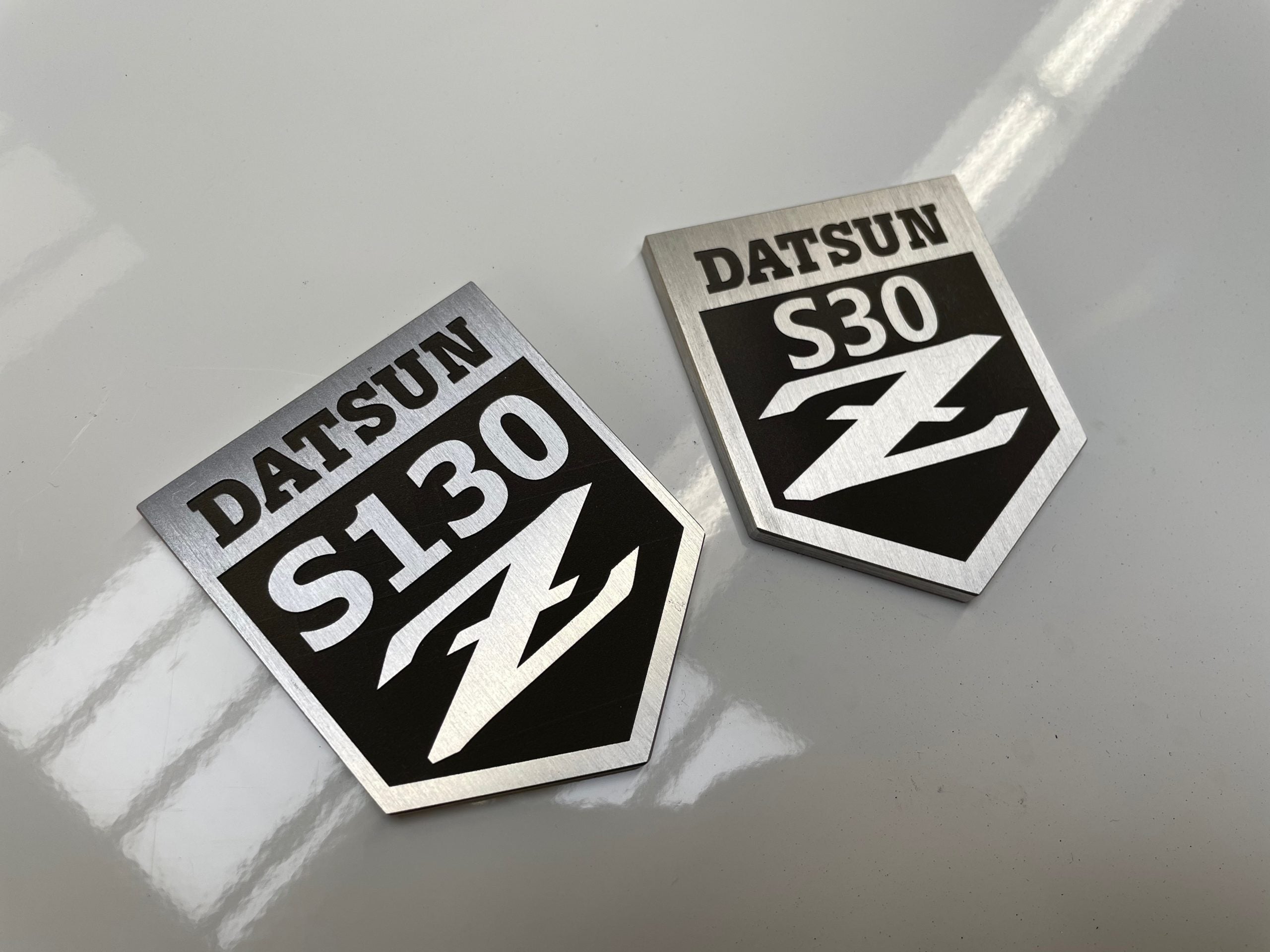
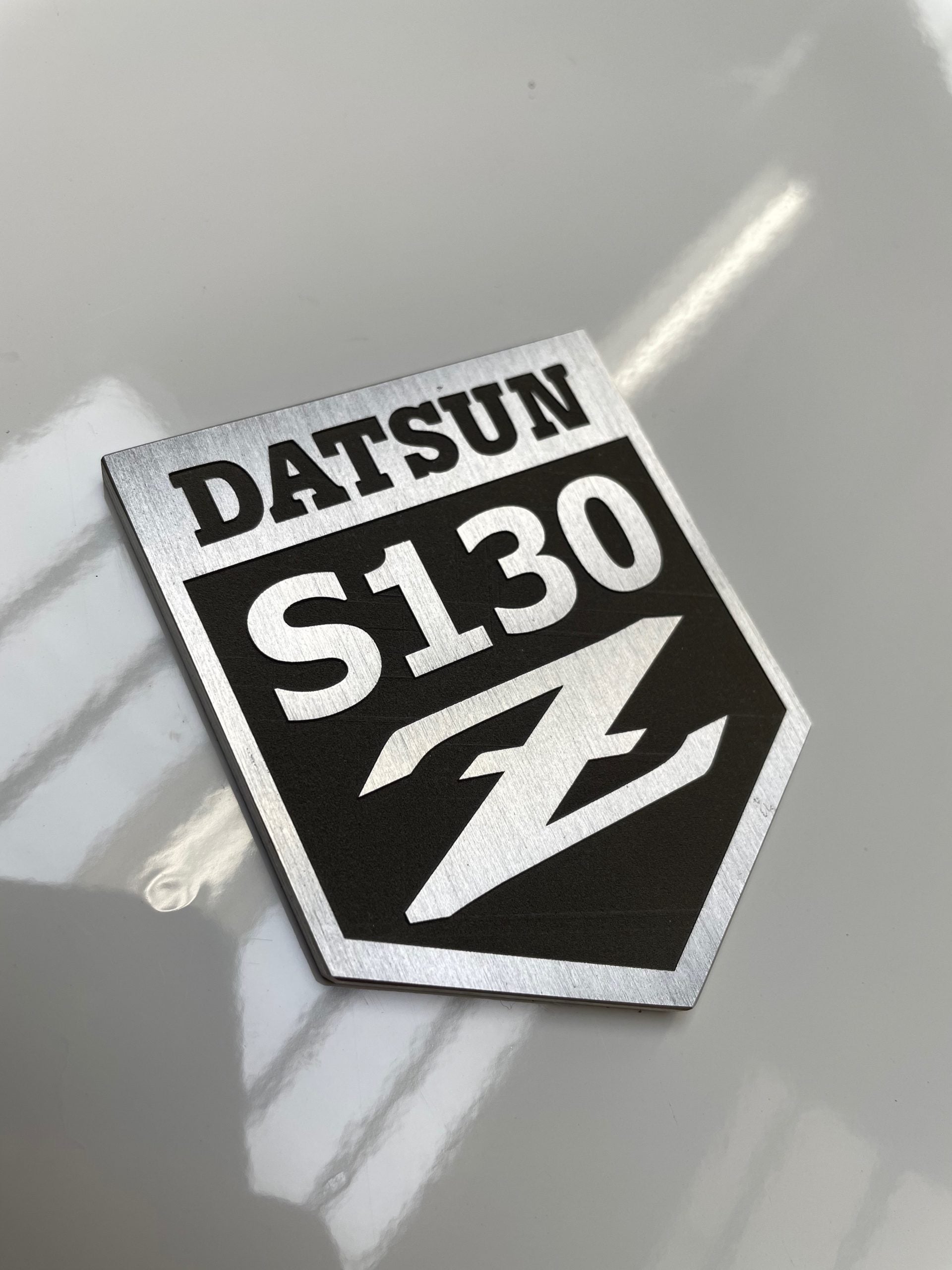
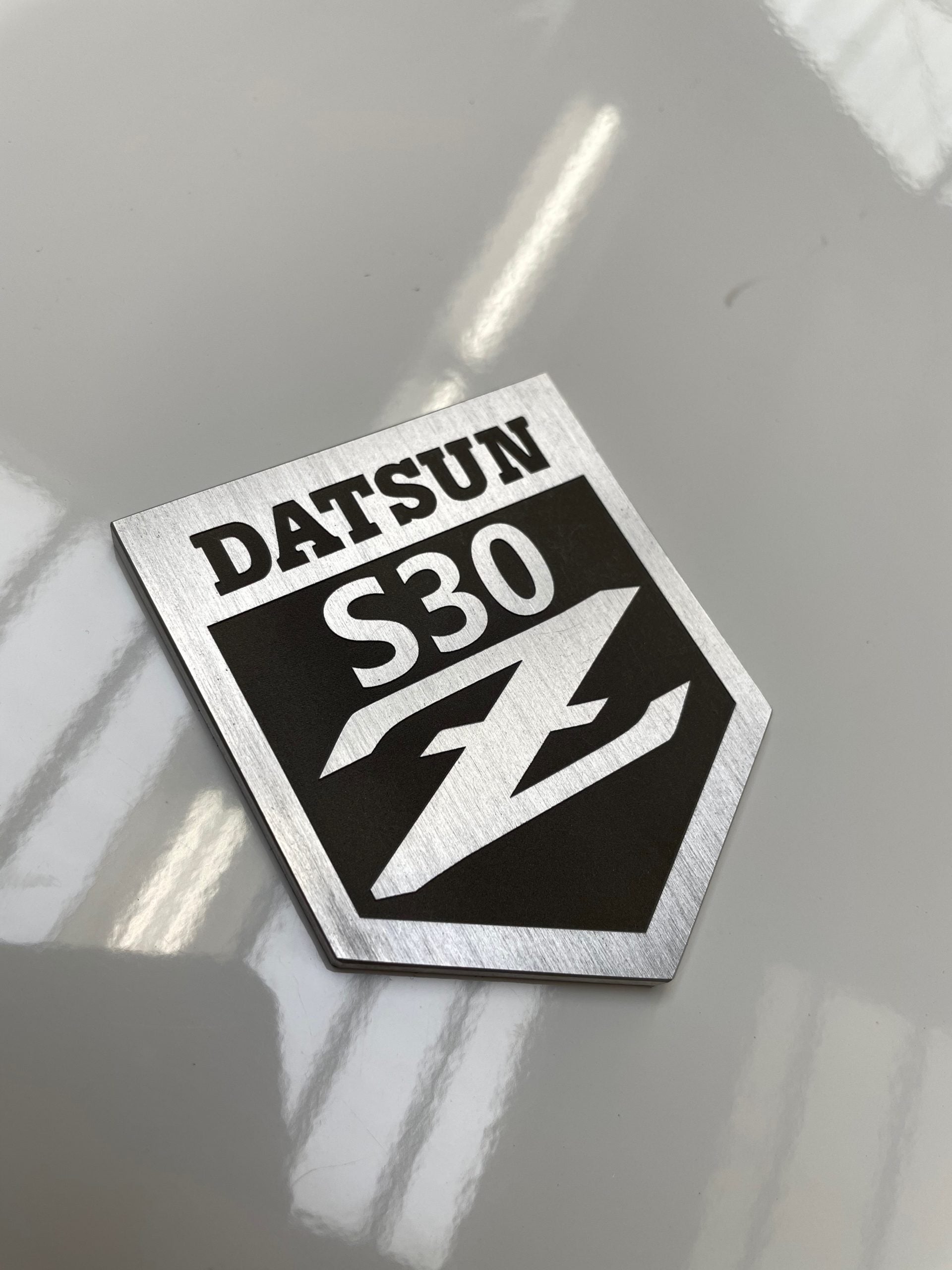
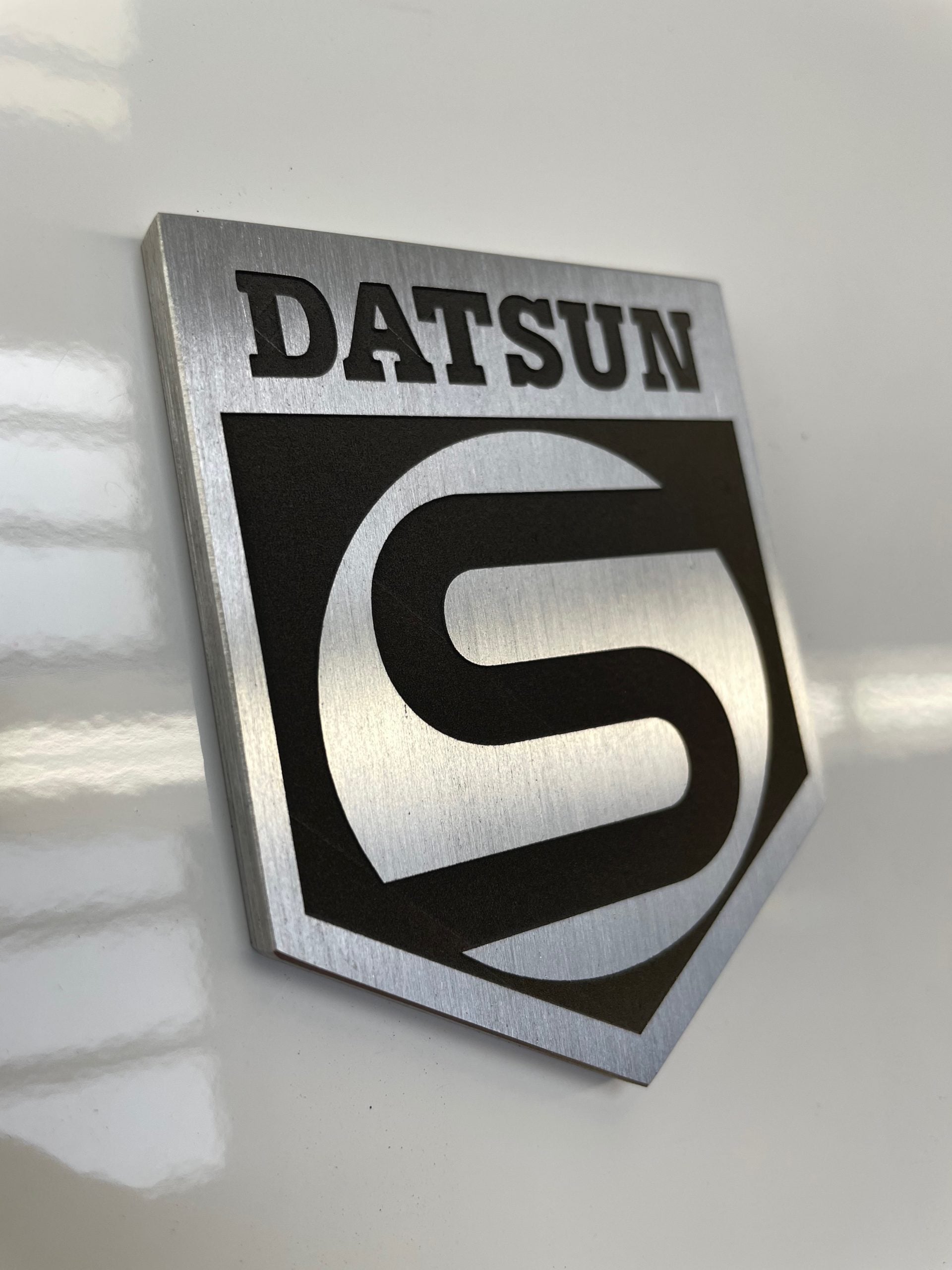
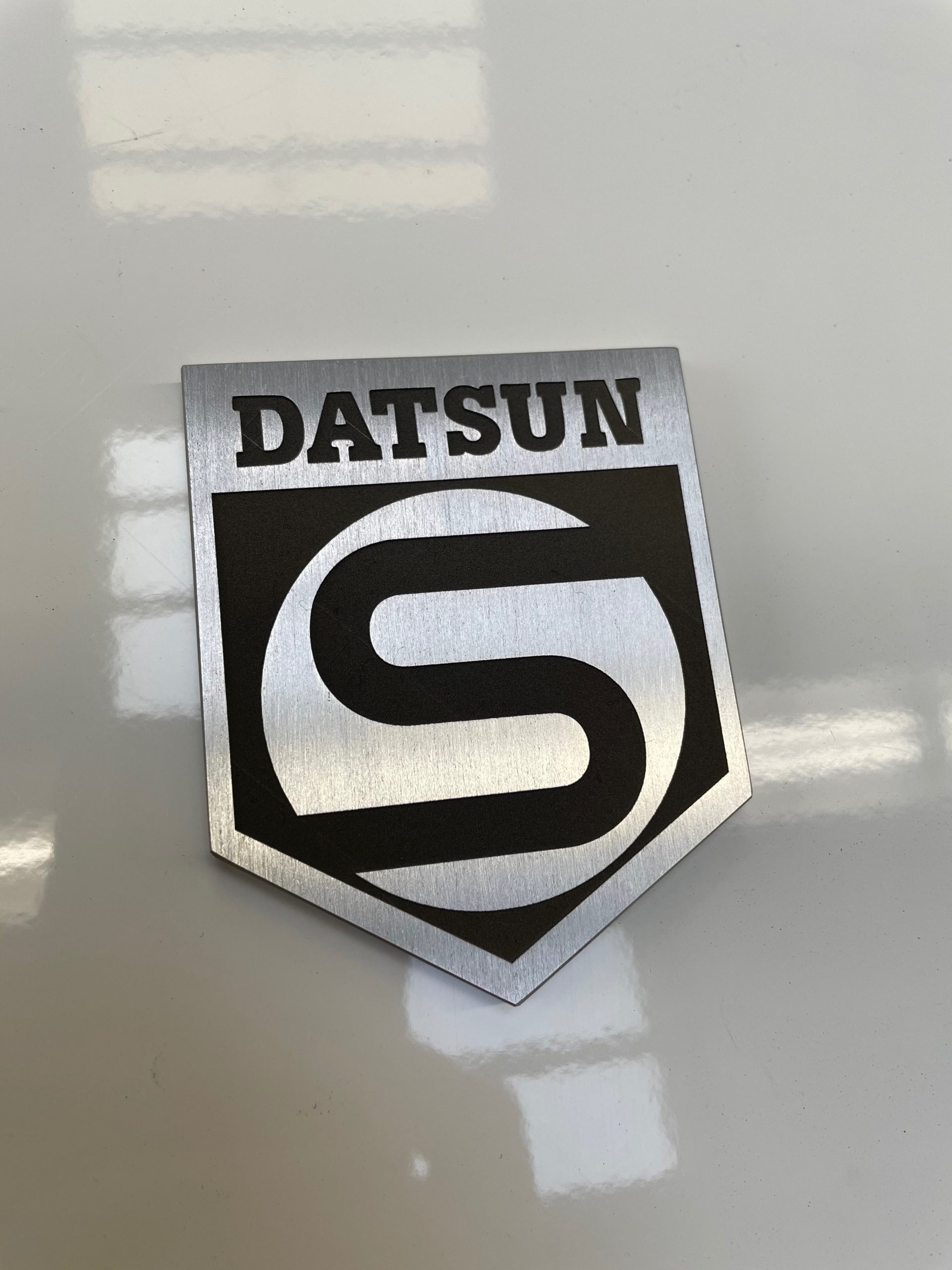
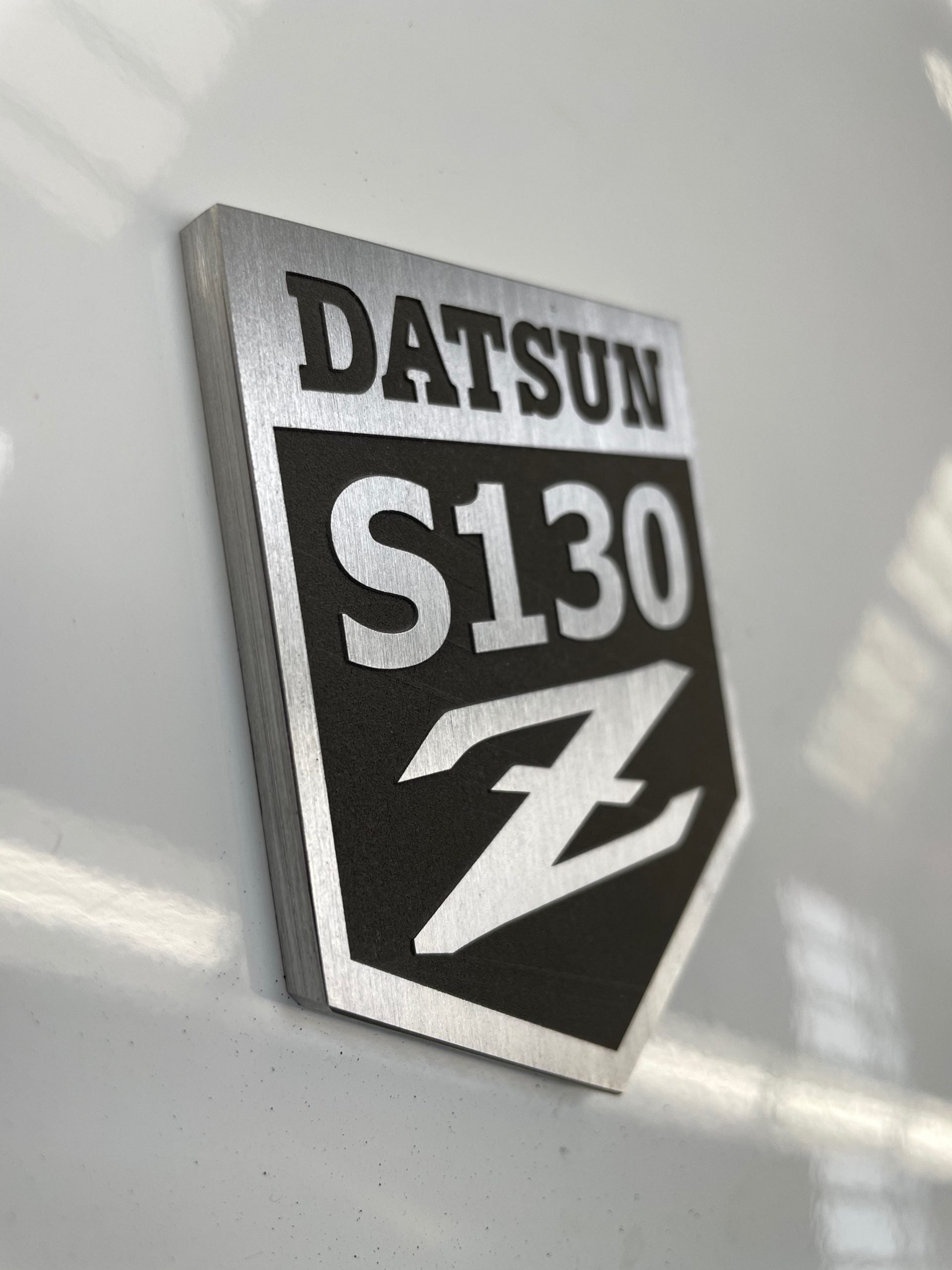
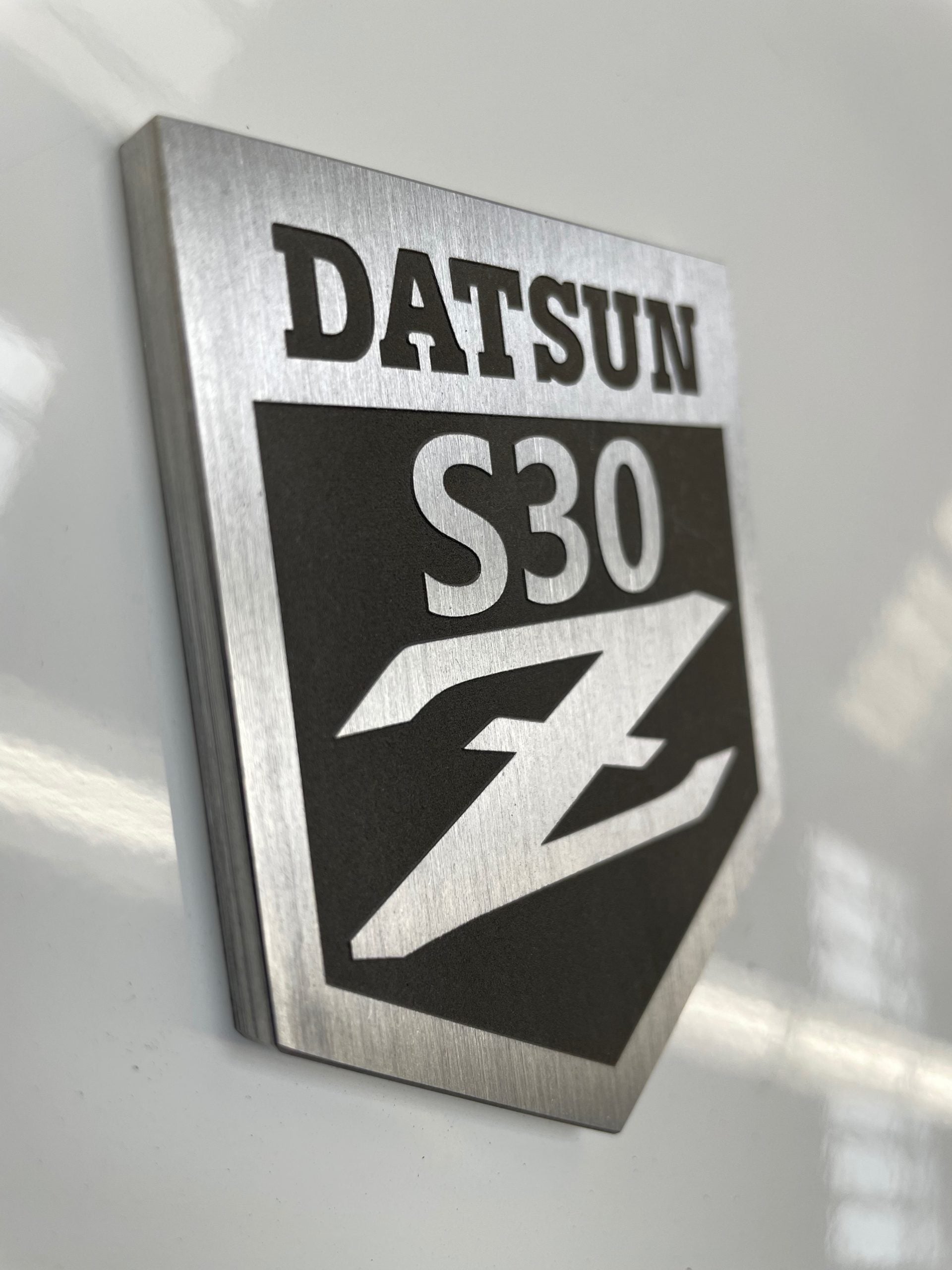
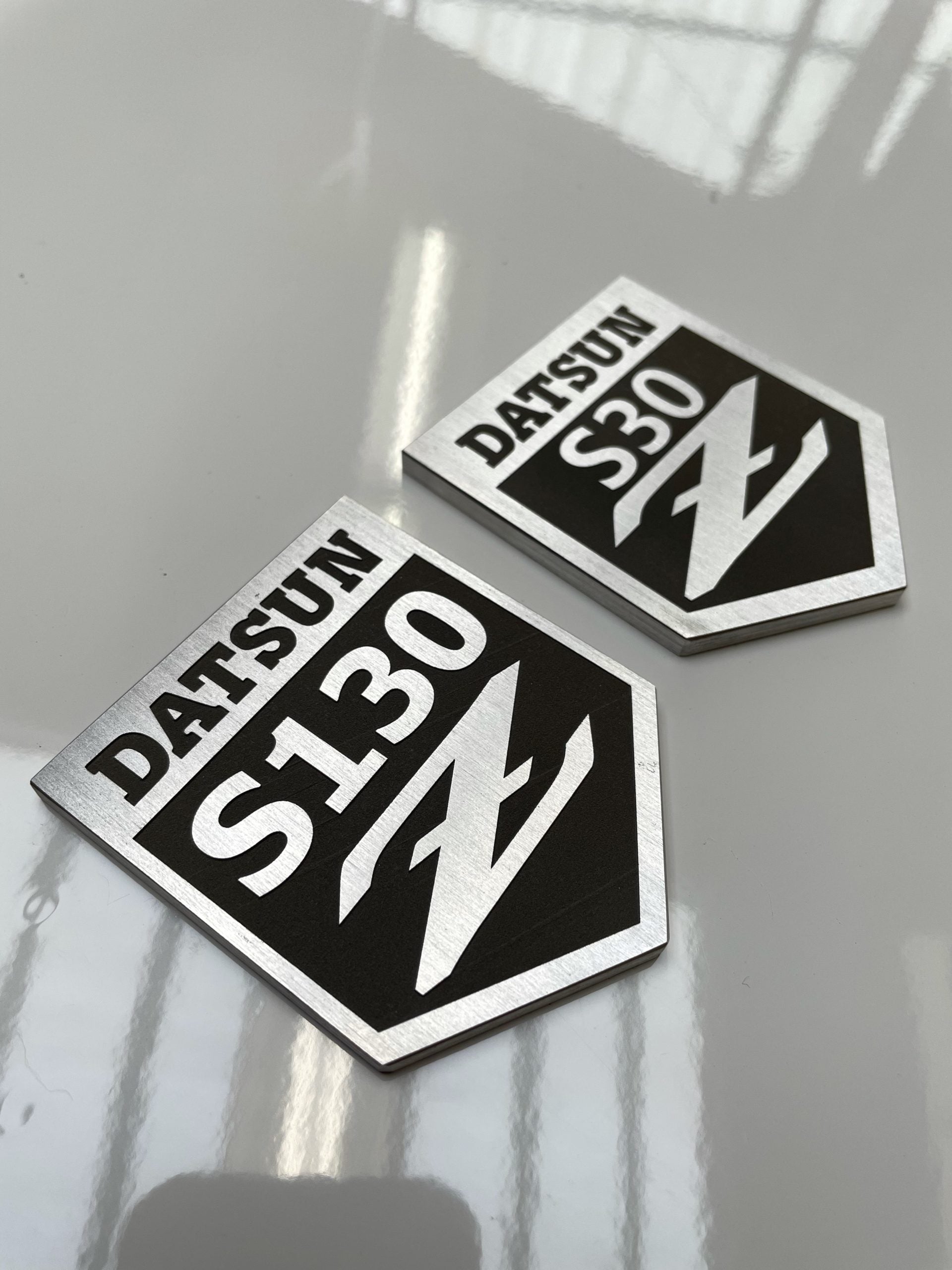
Skillard
ALUMINUM BADGE | DATSUN
Engraving Option
Skillard's aluminum Datsun emblems are CNC cut, then hand finished before being Laser Engraved with a Fiber Laser.
Three engraving options: Datsun S30 "Z", Datsun S130 "Z", Datsun with the Skillard "S".
They measure 2.5" wide by 3" tall and are 3/16" thick. These come with 3M VHB tape on the backside which allows you to install these badges in a variety of locations.
For guidance using the 3M VHB tape, please see our Quarter Window Louvers video below.
*Many of our products are in-stock. However, because all of our products are custom-fabricated, they may not be immediately available. Products that are not currently stocked may take 3-4 weeks from when your order is placed to when they're available for shipping. If you want to know the availability of this item, please email sales@skillard.com.
Thanks for visiting Skillard.com, home to custom Z car parts. Find what you need to build your vision!
VHB Tape Installation info from 3M:
Application Techniques
Clean: Most substrates are best prepared by cleaning with a 50:50 mixture of isopropyl alcohol (IPA*) and water prior to applying 3M™ VHB™ Tapes.
Exceptions to the general procedure that may require additional surface preparation include:
• Heavy Oils: A degreaser or solvent-based cleaner may be required to remove heavy oil or grease from a surface and should be followed by cleaning with IPA/water.
• Abrasion: Abrading a surface, followed by cleaning with IPA/water, can remove heavy dirt or oxidation and can increase surface area to improve adhesion.
• Adhesion Promoters: Priming a surface can significantly improve initial and ultimate adhesion to many materials such as plastics and paints.
• Porous surfaces: Most porous and fibered materials such as wood, particleboard, concrete, etc. need to be sealed to provide a unified surface.
• Unique Materials: Special surface preparation may be needed for glass and glass-like materials, copper and copper containing metals, and plastics or rubber that contain components that migrate (e.g. plasticizers).
Refer to 3M Technical Bulletin “Surface Preparation for 3M™ VHB™ Tape Applications” for additional details and suggestions. (70-0704-8701-5)
*Note: These cleaner solutions contain greater than 250 g/l of volatile organic compounds (VOC). Please consult your local Air Quality Regulations to be sure the cleaner is compliant. When using solvents, be sure to follow the manufacturer’s precautions and directions for use when handling such materials.
Pressure: Bond strength is dependent upon the amount of adhesive-to-surface contact developed. Firm application pressure develops better adhesive contact and helps improve bond strength. Typically, good surface contact can be attained by applying enough pressure to ensure that the tape experiences approximately 15 psi (100 kPa) pressure. Either roller or platen pressure can be used. Note that rigid surfaces may require 2 or 3 times that much pressure to make the tape experience 15 psi.
Temperature: Ideal application temperature range is 70°F to 100°F (21°C to 38°C). Pressure sensitive adhesives use viscous flow to achieve substrate contact area. Minimum suggested application temperature for the 3M™ VHB™ Tape RP family is 50°F (10°C). Minimum application temperature does vary by 3M™ VHB™ tape family and ranges from 32°F to 60°F (0°C to 15°C)
Note: Initial tape application to surfaces at temperatures below these suggested minimums is not recommended because the adhesive becomes too firm to adhere readily. However, once properly applied, low temperature holding is generally satisfactory. To obtain good performance with all 3M™ VHB™ Tapes, it is important to ensure that the surfaces are dry and free of condensed moisture.
Time: After application, the bond strength will increase as the adhesive flows onto the surface (also referred to as “wet out”). At room temperature approximately 50% of ultimate bond strength will be achieved after 20 minutes, 90% after 24 hours and 100% after 72 hours. This flow is faster at higher temperatures and slower at lower temperatures. Ultimate bond strength can be achieved more quickly (and in some cases bond strength can be increased) by exposure of the bond to elevated temperatures (e.g. 150°F [66°C] for 1 hour). This can provide better adhesive wet out onto the substrates. Abrasion of the surfaces or the use of primers/ adhesion promoters can also have the effect of increasing bond strength and achieving ultimate bond strength more quickly.


